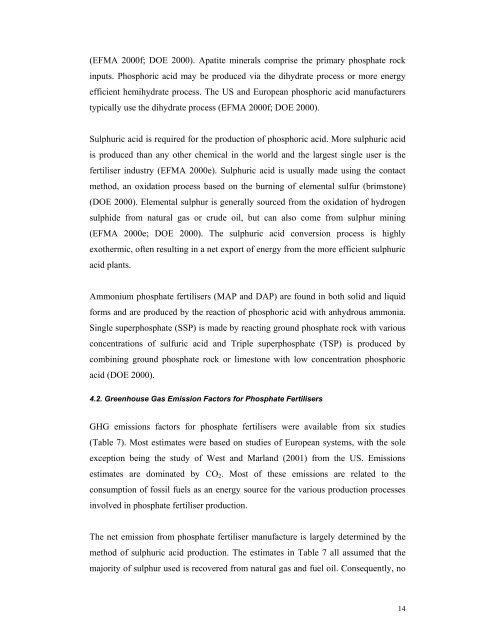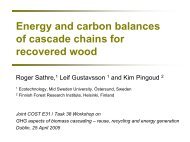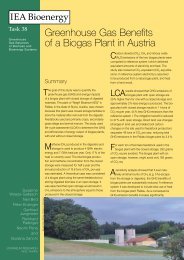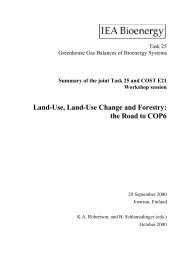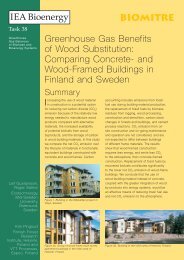A review of greenhouse gas emission factors for fertiliser production.
A review of greenhouse gas emission factors for fertiliser production.
A review of greenhouse gas emission factors for fertiliser production.
Create successful ePaper yourself
Turn your PDF publications into a flip-book with our unique Google optimized e-Paper software.
(EFMA 2000f; DOE 2000). Apatite minerals comprise the primary phosphate rockinputs. Phosphoric acid may be produced via the dihydrate process or more energyefficient hemihydrate process. The US and European phosphoric acid manufacturerstypically use the dihydrate process (EFMA 2000f; DOE 2000).Sulphuric acid is required <strong>for</strong> the <strong>production</strong> <strong>of</strong> phosphoric acid. More sulphuric acidis produced than any other chemical in the world and the largest single user is the<strong>fertiliser</strong> industry (EFMA 2000e). Sulphuric acid is usually made using the contactmethod, an oxidation process based on the burning <strong>of</strong> elemental sulfur (brimstone)(DOE 2000). Elemental sulphur is generally sourced from the oxidation <strong>of</strong> hydrogensulphide from natural <strong>gas</strong> or crude oil, but can also come from sulphur mining(EFMA 2000e; DOE 2000). The sulphuric acid conversion process is highlyexothermic, <strong>of</strong>ten resulting in a net export <strong>of</strong> energy from the more efficient sulphuricacid plants.Ammonium phosphate <strong>fertiliser</strong>s (MAP and DAP) are found in both solid and liquid<strong>for</strong>ms and are produced by the reaction <strong>of</strong> phosphoric acid with anhydrous ammonia.Single superphosphate (SSP) is made by reacting ground phosphate rock with variousconcentrations <strong>of</strong> sulfuric acid and Triple superphosphate (TSP) is produced bycombining ground phosphate rock or limestone with low concentration phosphoricacid (DOE 2000).4.2. Greenhouse Gas Emission Factors <strong>for</strong> Phosphate FertilisersGHG <strong>emission</strong>s <strong>factors</strong> <strong>for</strong> phosphate <strong>fertiliser</strong>s were available from six studies(Table 7). Most estimates were based on studies <strong>of</strong> European systems, with the soleexception being the study <strong>of</strong> West and Marland (2001) from the US. Emissionsestimates are dominated by CO 2 . Most <strong>of</strong> these <strong>emission</strong>s are related to theconsumption <strong>of</strong> fossil fuels as an energy source <strong>for</strong> the various <strong>production</strong> processesinvolved in phosphate <strong>fertiliser</strong> <strong>production</strong>.The net <strong>emission</strong> from phosphate <strong>fertiliser</strong> manufacture is largely determined by themethod <strong>of</strong> sulphuric acid <strong>production</strong>. The estimates in Table 7 all assumed that themajority <strong>of</strong> sulphur used is recovered from natural <strong>gas</strong> and fuel oil. Consequently, no14


